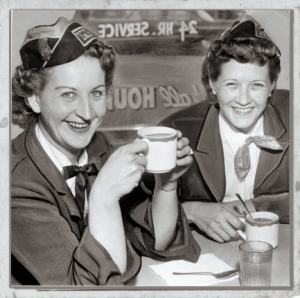Prior to passage of the Pure Food and Drug Act in 1906, truth in labeling wasn't a thing. For coffee, that meant you could say the coffee was from anywhere. Coffee drinkers liked coffee from exotic places, like Mocha or Java. For much of the later part of the nineteenth century coffee from these ports was readily available, but increasingly expensive. When the cost of bringing coffee from so far away exceeded the price customers were willing to pay, American coffee roasters began to buy more and more coffee from Brazil, coffee that was closer and cheaper, which is not to say they labelled the coffee as coming from Brazil. It was cheaper but also bland.

Following passage of the Pure Food and Drug Act roasters who did not simply ignore the intention of the new law started using exotic names for their blends. But oddly, no matter what the blends were named, almost all of them tasted like Brazilian coffee. As WWI approached, most Americans were drinking all Brazil all of the time. There was greater variation on the coasts but coffees from exotic ports didn't make it into the interior. As for Central America, nearly all of the coffee grown there went to Europe.

Then came the submarines. Germany introduced the world to the art of submarine warfare and suddenly no ship was safe in the Atlantic. Not only did coffee shipments from Central America slow to a crawl, but even shipments from Brazil to New York decreased dramatically. Americans were getting jittery. Except for this: While coffee shipments could no longer cross safely from Central America to Europe, they had no trouble moving in the Pacific Ocean, up the coast of California, to San Francisco. During WWI coffee imports into San Francisco increased by more than 100% and there were two regional roasters located in San Francisco at the time, poised to exploit their new competitive advantage over the east coast coffee roasters: Folgers and Hills Brothers.

What was their new advantage? They had access to Central American coffees with complicated (read interesting) flavor profiles and they had access to enough of it that they could begin to expand their business eastward. For decades, coffee had gone west, roasted in the east and delivered to the west. Folgers and Hills Brothers were simply outposts compared to the east coast roasters at that time. But during and following WWI they began to push back. The eastward expansion and ultimate domination of these San Francisco roasters, ironically perhaps, was driven by quality coffee.
